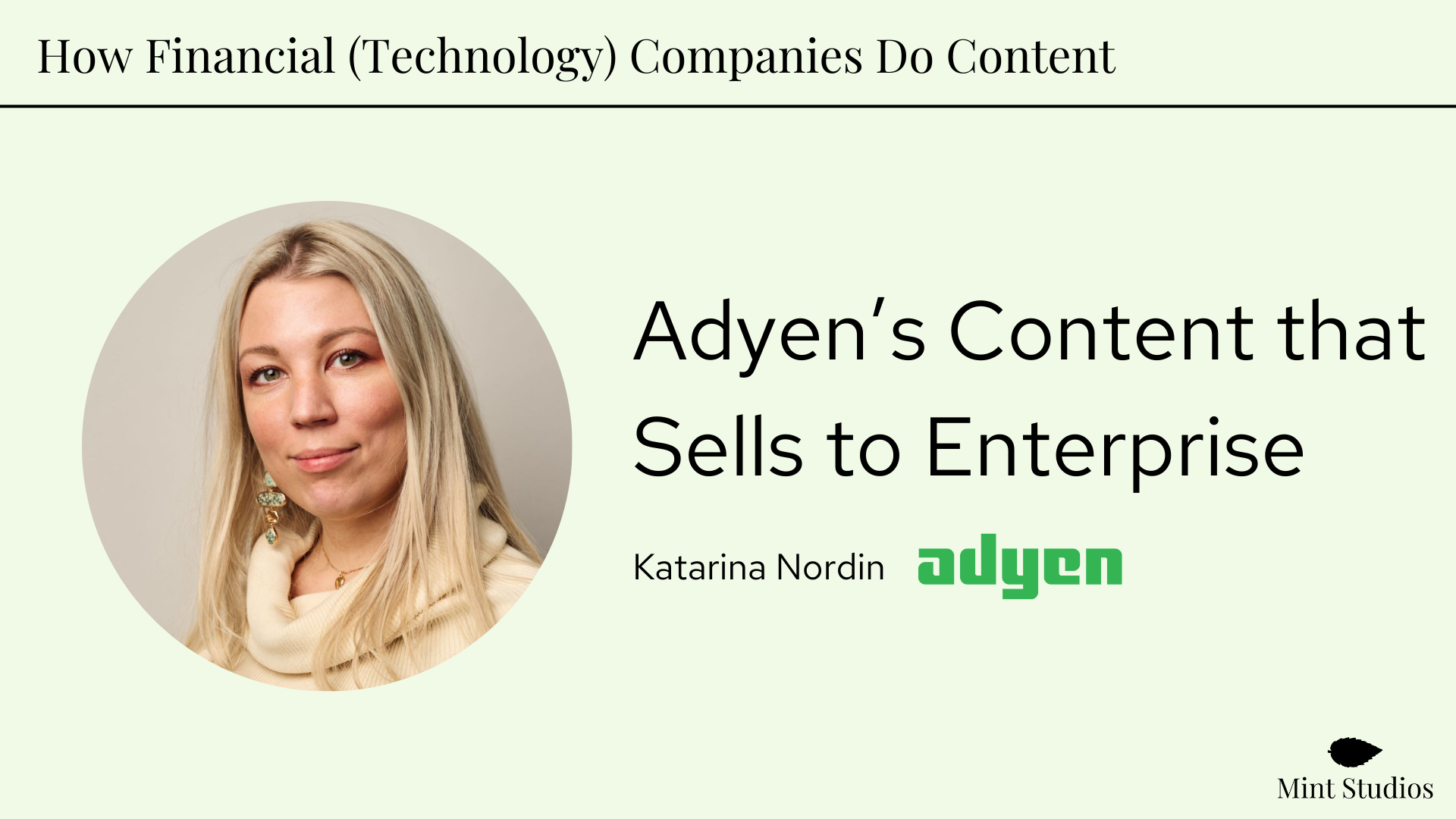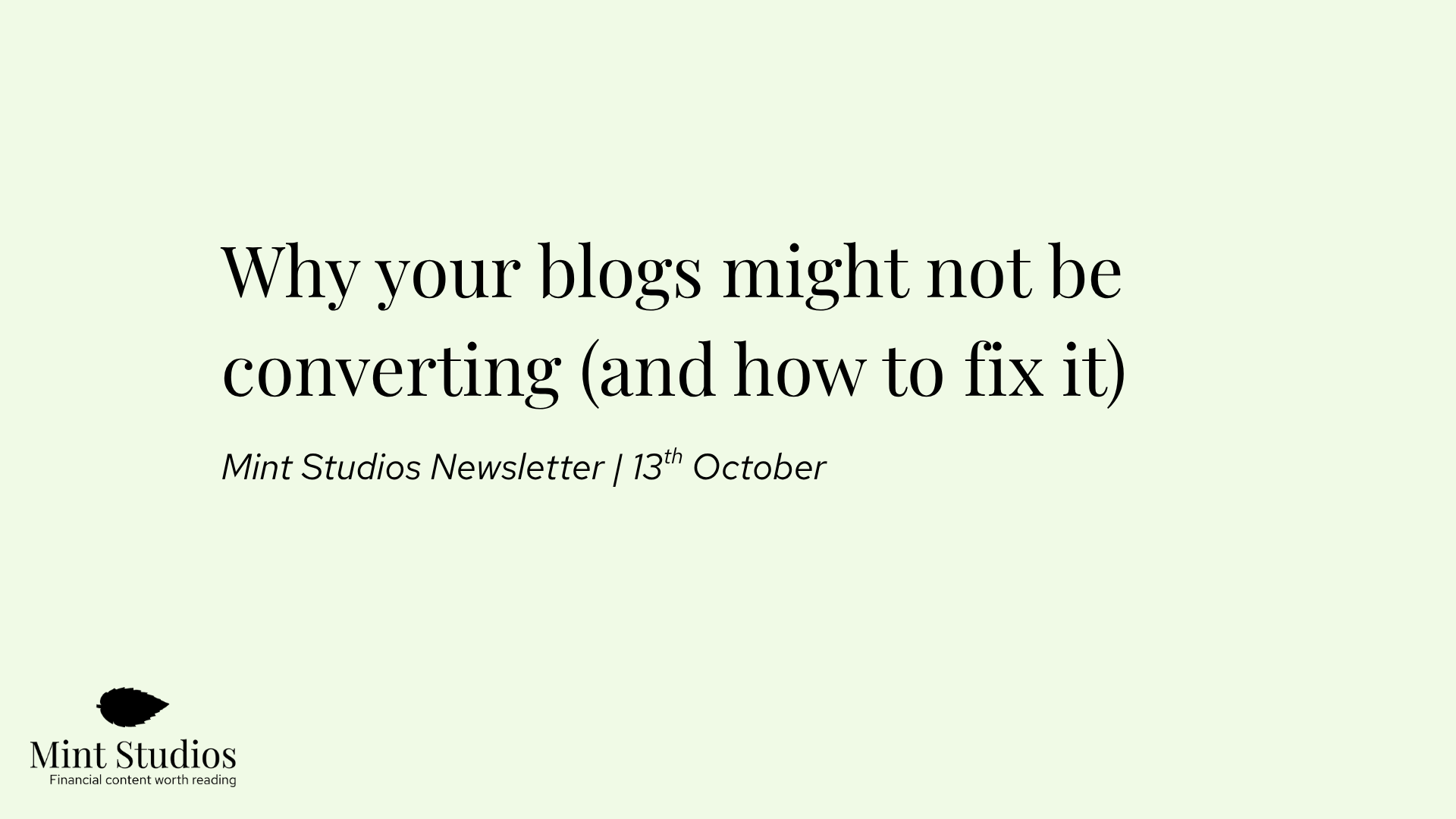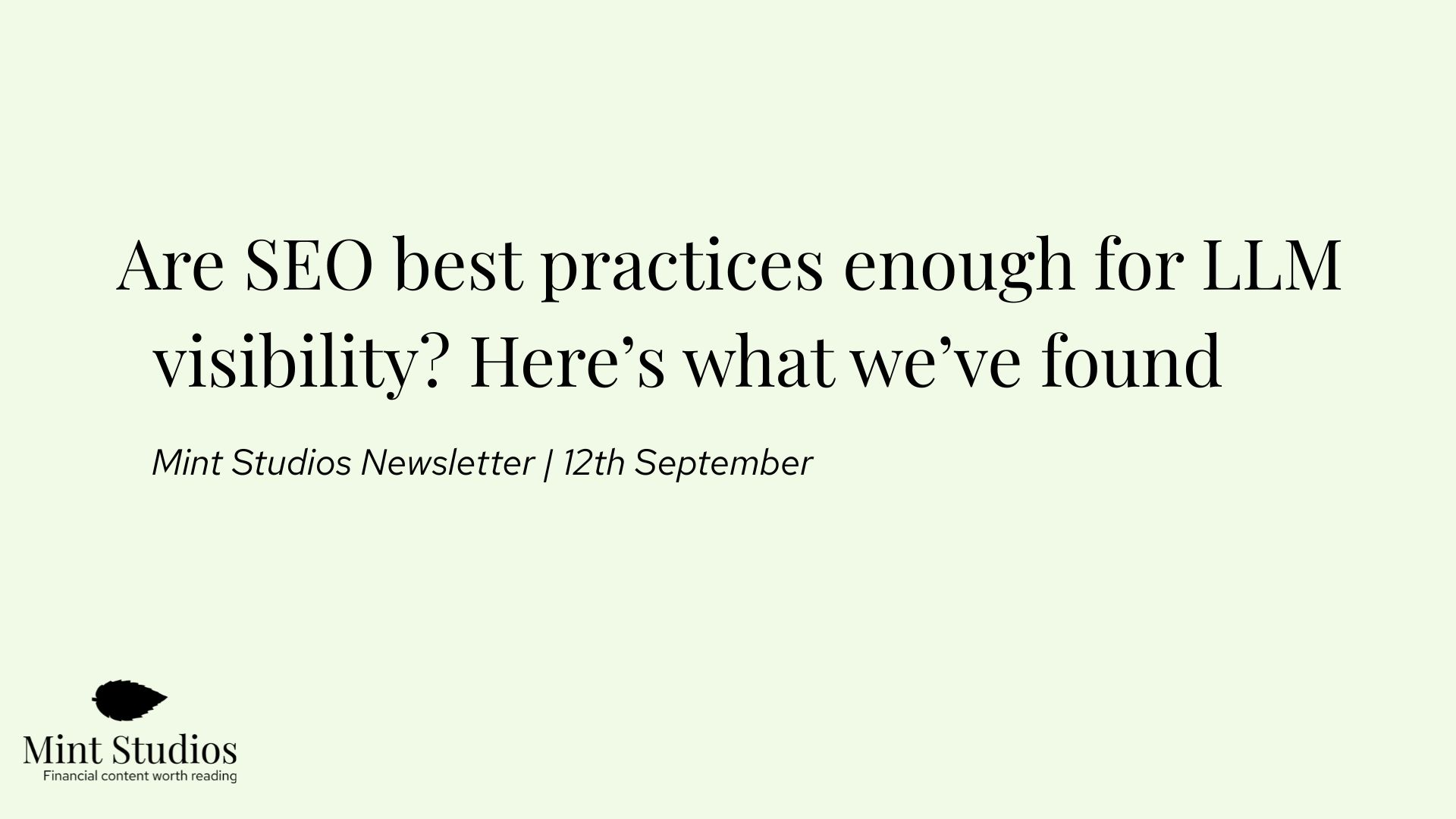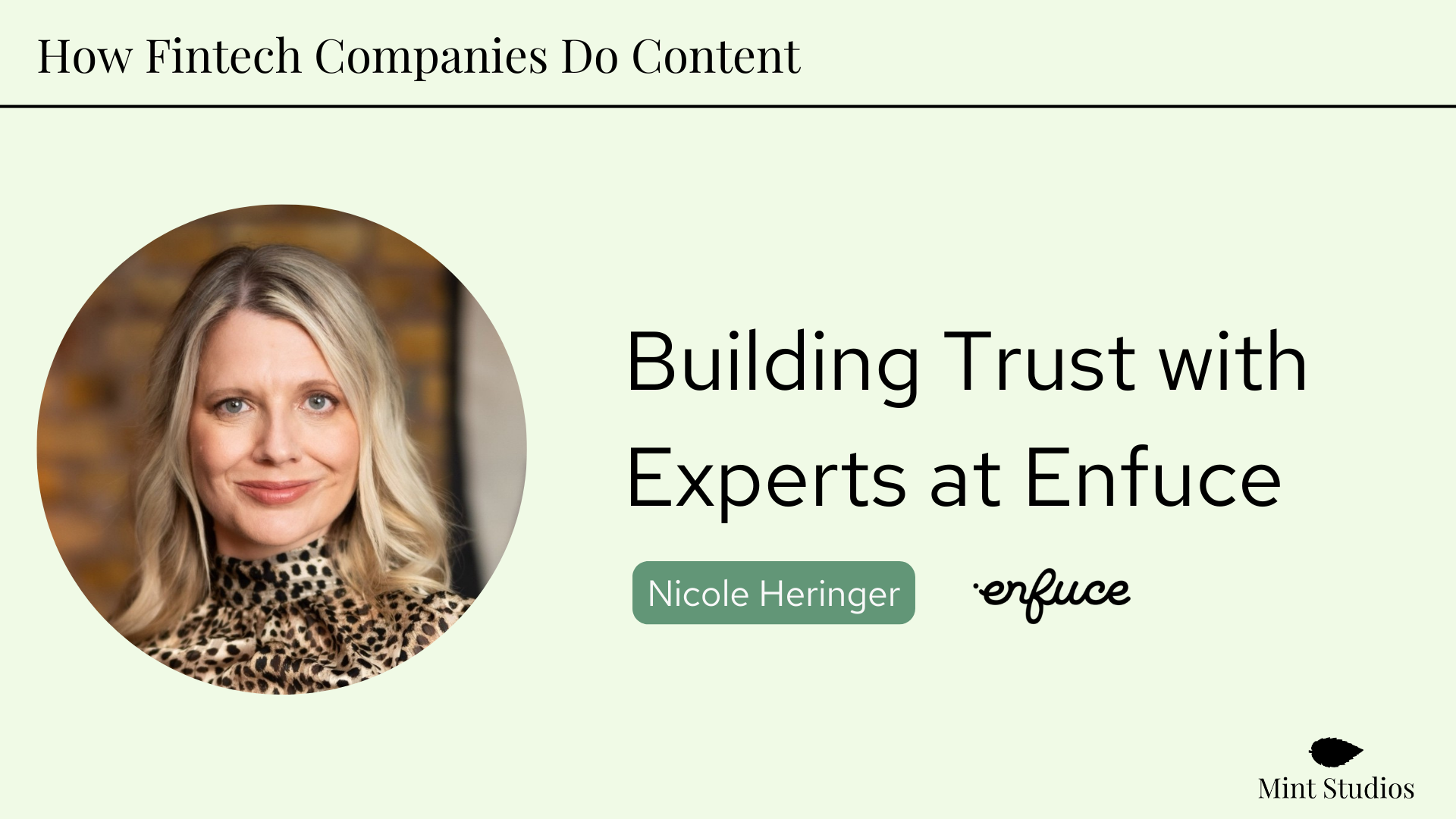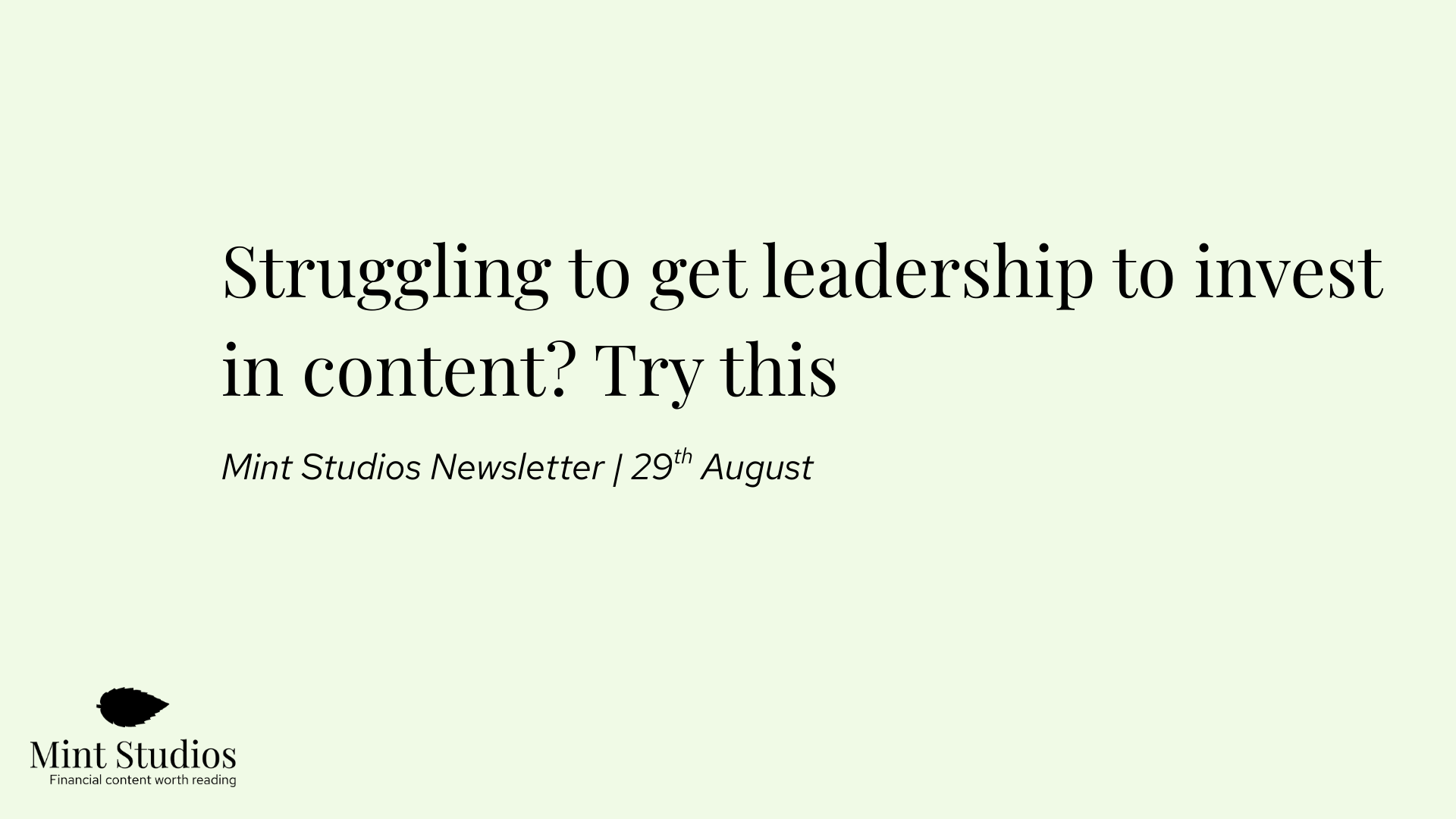Adyen is one of the original and best-known fintech companies, and is also currently the largest fintech company in Europe by market cap.
Content plays a big part of their marketing and sales, and in this article, we’ll be diving into what their content production process is like, how they think about content overall and what their content strategy looks like.
For those who don’t know, Adyen is a financial technology platform that helps enterprise businesses accept payments on a single platform. They have a host of financial products including POS terminals, virtual cards and online payments (and that’s just a small part). Their platform allows merchants to have full control of the value chain that is payments.
In this content case study, we sat down with Katarina Nordin, SVP of Marketing and Revenue at Adyen to learn more about how Adyen thinks about content for demand generation, how they measure success and how their content production process looks like.
Note: Every couple of months throughout 2024 we’ll be releasing a new case study on how a financial services or fintech company does content. Our last one was on how 11FS does their fintech podcast. Join our newsletter to make sure you get each issue in your inbox!
The story behind Adyen
Adyen was founded in 2006 by Pieter van der Does and Arnout Schuijff. Pieter van der Does had already started a payments company in the 2000s called BitBit, which he sold to RBS.
In those days, payments operated on outdated infrastructure that caused merchants, banks and consumers a lot of headaches, and so the pair started Adyen with the goal of helping businesses grow with a platform that could help fast-growing global businesses.
In an interview with The Scale Lab, van der Does admits that Adyen’s first challenge was to acquire customers. Even with his own track record in payments, it wasn’t easy to get the big names. That’s why when they started, they began working with gaming companies: “Once we had those companies, it was possible to bring the bigger companies on board”.
The incumbents in payments at the time were typically seen as part of the “IT department” of the company, but Adyen wanted to offer a payment service that would specifically serve merchants. One way they differentiated from competitors was their laser focus on customer data. Specifically, data analysis that would help merchants detect and reject potential fraud, as well as validate genuine customers who may not be accepted on other platforms. This also gave merchants more insights into shoppers and their spending habits.
Adyen was built at a time when current solutions were very fragmented and difficult to navigate. Adyen was unified and could connect directly to each payment endpoint and make payment flows smooth. In the podcast interview, van der Does also talks about the culture: “we have a culture where people are empowered to personally contribute, and where career paths are unfixed”.
Eventually, Adyen also started serving physical stores since their infrastructure served these types of businesses that had online and offline presence very well. They’ve been serving companies in the US and Europe since day one, and they now serve large companies like Netflix, Facebook, Uber and Spotify and other retailers as clients.
Today, Adyen accepts payments in almost 100 countries, employs close to 4,000 people, has 27 offices around the world and processed €970.1 billion in payment volume in 2023. They’re a fintech darling and a company that many fintech startups look up to. We’re huge fans of Adyen, so it was an honour to interview Katarina and learn more about how they do content marketing.
Adyen’s content strategy: focus on pain points and use cases, not just verticals
Typically, payment companies create content that is broken down by verticals (that has been our experience as a content marketing agency working with fintech companies). For example, they’ll create separate pieces of content for travel, e-commerce, merchant payment services, etc.
At Adyen, the focus is on verticals as well as pain points. Katarina tells us that they create content based on three key categories that are based on pain points and use cases:
- Digital businesses that process payments only online (e.g. Spotify)
- Omnichannel businesses that process payments in multiple channels (e.g. H&M)
- Platforms and businesses that have their own merchant relationships (e.g. accounting software, service the food and beverage sector with their software systems).
The product marketing team then maps messaging along these three categories. The content teams then have the job of defining what stories to tell in order within each category to get the proposition to life.
As Katarina explains later on, each team operates in a very autonomous way. Adyen has local content teams situated around the world, with one global team that prioritises what’s most important. Every local team gets materials on their category and target audience as a kit, and the team can then decide what type of content to create and how to publish it.
This approach allows them to be flexible and adaptable, allowing them to, for example, divert resources to an upcoming event or a specific ABM strategy whenever required.
How does Adyen sell to enterprise? With personalised content for each person in the buying committee
Selling payments to enterprise is not like selling a SaaS product or a B2C product. How does Adyen create content that caters to an enterprise audience?
As Katarina explains, with enterprise, you’re dealing with creating content for a buying committee, not an individual making a decision. Some members of that committee might not even be employees and might be integrators or consultancies.
This buying committee will also spend a lot of time and energy doing research. Switching a payment provider is an extensive process that requires a lot of resources and is not a decision that is easy to reverse. In many cases, the decision maker might not even be the person doing the research – however, there will definitely be someone else on the team doing the research.
This is why it’s so important to distinguish between the different types of buyers:
- The decision makers
- The people investing the time in doing research
- The operational users
For example, financial controllers are one of the operational users whose job involves looking through a lot of reports. They want to know if the payment solution they pick will make their reporting easier or harder, and before picking a payment provider, they will want to know how that provider does its reporting.
When creating content for this buyer persona, you need to make sure you’re creating content that answers that question. You can see how Adyen has created an entire course for financial controllers who want to understand how Adyen’s reporting works: Finance Course
On the other hand, the decision maker might be interested in more thought leadership-like content, so for example they might read a piece of content more like: Unlocking the power of automation for your hospitality business.
Adyen also has an SEO team who focus on making sure Adyen is going after the right keywords with the most relevant content. The themes and keywords to go after and the content will determine whether they’re going to create a piece of content for the operational user, reporting and integration.
Interestingly, Katarina explains that a lot of the content the Adyen team creates starts with a blog post. It’s a great way to get a foundational idea down on paper, and then repurpose from there. From that blog post, they’ll create a social post, use a tool to create videos and even podcasts. Katarina explains that the Adyen marketing team likes to implement a lot of “Optimise and Scale” approach, which means improving on a specific topic or piece of content, and then scaling with other types of content like webinars, blogs and reports.
How does the Adyen content team measure success? Pipeline, plus marketing metrics
The Adyen marketing team focuses 80% of their time on bringing in new customers, with their content focused on serving the entire marketing funnel, from top to bottom.
What metrics do they track to measure success? Typically:
- Sales pipeline
- Medium term marketing metrics
To those who are unfamiliar with what selling payments is like, it’s important to know that closing a payments customer is all about payment volumes. When you acquire a new customer, you could win 10%, 40% or 90% of their transactions. But it could be months or even years before the customer uses you to process 40% of their transactions. This makes it even harder to attribute a successful customer all the way back to content.
That’s why the key metric the Adyen marketing team is focused on is revenue from marketing deals, which they then compare across all their acquisition channels. If they see that win rates are worse or that the quality of the customer is lower compared to a separate channel, then they know there’s something they need to work on with their content.
In terms of content marketing metrics, they’re tracking the typical marketing metrics:
- Number of pageviews and video views
- How many viewers finished a video
- Reports and course sign ups
- And many more
What they’re very good at, Katarina explains, is constantly putting content and marketing into a bigger context to make sure they’re aligned with the wider commercial team.
How is the content team set up?
Adyen has a 180 person marketing team, with a content team of about 15 people. They also have an in-house studio with designers, developers, product managers and content writers.
There’s a healthy culture of autonomy: the process usually starts with the local team deciding on which campaigns to run and ensuring they are in close alignment with the commercial team. Louis Debatte Monroy, Adyen’s VP of Product Marketing, uses the analogy of a HelloFresh kit to explain how each team operates: the global team gives each local team the resources they need: customer insights, the tools, the messaging. Each local content team can then “pick off the menu” and create their own campaigns depending on what they think will work.

When it comes to deciding on which content to create, it all starts with the goal they’re looking to achieve. Depending on the goal – established in the content strategy – they might adapt the piece of content to a webinar, or translate it to a lot of different formats.
Creating demand with Academy
The Adyen content team has totally mastered Top of the Funnel and customer retention content with their content Academy and Knowledge Hub. Within these two resources, people can find upcoming webinars on how to improve payment flows, join an in-house training day and watch how-to videos to understand how the Adyen platform works. There’s even fully-fledged courses on how to complete entire functions on the Adyen platform.
And that’s just part of it. They also have an incredible knowledge hub with thought leadership content, customer stories and guides. It’s a content marketer’s dream!
As Katarina explains, the goal of this type of content is to create demand, with the key areas focusing on:
- Introduction to payments
- Understanding the industry
- Understanding the offering
- Understanding what customers get from Adyen
This is content for every stage of the buying journey, with a big focus on Top of the Funnel.
When it comes to tracking for content, they mainly focus on the first and last port of entry – as mentioned earlier, it’s hard to track through to the full funnel. But the marketing and content team know that creating all this content helps with research, because in 2 years, Adyen might be on the consideration list and if the researcher learnt a lot about payments via their academy, then Adyen has a higher chance of being selected.
It’s very easy to be super data driven with marketing nowadays, but Katarina does say that data helps them make an informed decision: metrics should not be about building the strategy – ideally, you already have a strategy getting into it, which you can evaluate and iterate with data.
How does Adyen make sure the content team understands their target customer?
Anyone who’s spent some time reading or creating payments content knows that it’s very obvious when the person writing the content doesn’t understand the reader’s pain points nor how payments work.
This is especially true when creating content for sales enablement or account based marketing: you’re creating more technical content for an advanced reader, so the quality needs to be very high. This can only be done well if the person doing the writing understands the target market’s pain points, what features and use cases they want to know more about and which benefits are relevant to them.
But with a 180 person marketing team, “talking to the customer” is just not feasible. So how do they do it? This is where the UX team comes in. The UX team gathers many resources and hours of customer interviews, and makes them accessible to any team member that wants to read and access it. This means that anyone on the marketing team can access these resources and spend hours digging deep into the mind of the target market. It’s a fantastic way to ensure the content you create resonates with the reader.
Personally, Katarina explains she’s in a lot of sales meetings and has been involved with a lot of case studies. She’s also involved in a lot of events, conferences and speaking engagements, which allows her to stay on top of what her target audience is feeling.
Adyen content: when selling to enterprise, make sure you create content for each person on the buying committee
At Mint Studios, we often say that there’s a big gap in quality with content about payments. Most payment companies are either creating very beginner, payments 101 content, or surface level thought leadership content that doesn’t resonate with anyone. It’s very hard to find good payment content.
Adyen is the exception. If you work in fintech or payments, their content is one to look up to. They’ve nailed Top of the Funnel and educational content, and they’ve also done a great job with more Bottom of the Funnel content via how-to videos, technical content and thought leadership that actually comes from experts who have a point of view.
Most importantly, content plays a big role in acquiring enterprise customers, because they understand who they’re targeting and the different types of content each person on a buying committee would want to read.
Thanks to Katarina for sharing her insights, we hope this inspires more fintech companies to implement content correctly when selling to enterprises.

